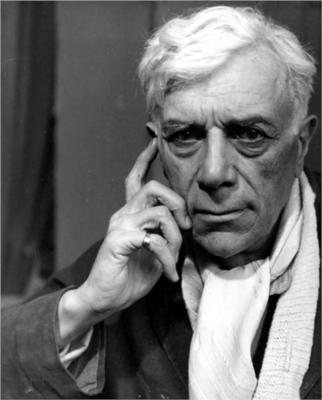
At the beginning of the twentieth century, a new trend in painting emerges, based on the construction of a three-dimensional shape, dissected into geometric elements. The paintings turn into flat panels, devoid of perspective and chiaroscuro. One of the founders of Cubism is the artist Georges Braque.
He was born on May 13, 1882, to study painting began early in the School of Fine Arts. In 1900, Marriage arrived in Paris, where he began to attend the Academy of Embra. There, having got acquainted with Dufy and Friiez, he was carried away by Fauvism and achieved significant successes in this direction. All his works, exhibited in the Salon of Independent in 1906, were sold out.
1907 was a landmark in the works of Georges Braque. He visited a large-scale exhibition Cezanne and met with Picasso and his Avignon girls. So in his work and in the work of Picasso, the “Cezanne” period of cubism began, in which color plays a significant role, increasing the volume. Further, their search led to the birth of the next stage – analytical cubism. The habitual images of objects were destroyed into separate spatial structures, the volumes disappeared, turning into a freakish ornament of sharp angles and curved accents. In 1912, Marriage began to introduce into the paintings alphabetic stencils, stickers, mix paints with sand, wood and iron filings, add paper applications, create collages. This style was called “synthetic cubism.”
With the outbreak of World War I, Marriage was drafted to the front, where he was seriously wounded in 1915, he could return to painting only two years later. Between wars he writes neoclassical things, decorative, in which, nevertheless, you can see the severe school of cubism.
Georges Braque died at the age of 81 in Paris. And his works, which have become a kind of artistic symbol of the XX century, now occupy a worthy place in the world’s largest museums, including the Paris National Museum of Modern Art and the Pompidou Center.
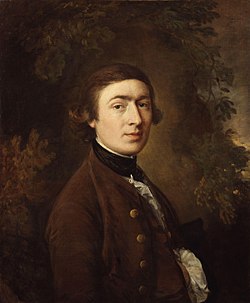
“There is no devilry worse than writing portraits,” – noted the most famous English portraitist of the XVIII century, Thomas Gainsborough. He considered landscapes to be his true vocation, but among the aristocracy they were not successful, however in the genre of the portrait the artist became an unsurpassed master. Sharply sensitive character of the portrait, he created exquisite images, his characters are often depicted against the backdrop of the landscape, in a relaxed atmosphere; color, built on a combination of cool bluish-silvery tones, conquers with nobility and harmony.
Thomas Gainsborough was born in Suffolk in the family of a cloth merchant. He left the family very early, from the age of 13 the boy already lived independently in London and earned money selling his sketches. Thomas Gainsborough studied with the famous portraitist Francis Hayden and the landscape painter Güber Gravelo, who introduced the rococo elements into the artistic style of the beginning artist.
July 15, 1746 Gainsborough married with Margaret Barr, and a few years later moved from a bustling capital to provincial Ipswich. The main earnings of the artist are portraits. When he moved to Bath in the beginning of 1760, real popularity is falling on him. The paintings of Thomas Gainsborough’s brush are distinguished by special lightness, ease, refinement and grace. Many aristocrats waited for the queue for several years, wishing to have a portrait written by Gainsborough.
In the favorite silvery-blue palette is written “Boy in Blue”, a portrait of J. Buttol. The painting is filled with poetry and musicality, the face of the teenager is melancholy and excited, the figure of the boy stands out against the background of the evening landscape, pearl gray, olive and blue tones constitute an amazing complex coloristic symphony.
At the end of life, Gainsborough moves to London, but in his works more often there are sentimental portraits of peasant children, landscapes and even genre scenes.
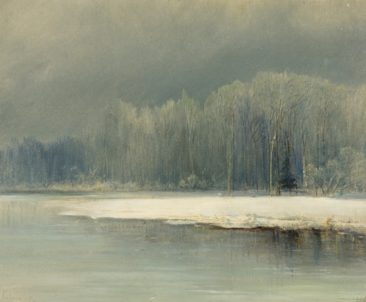
Alexei Kondratievich Savrasov, Russian landscape painter and talented teacher was a man of a grave, even tragic fate. He died in poverty, and not having received widespread recognition of his contemporaries. His work was forgotten, and only a few decades after the death of the artist, he was recognized as the founder of the Russian realistic landscape.
Alexei Savrasov was born in Moscow in a merchant family, however, he did not follow in the footsteps of his father and entered the Moscow School of Painting and Sculpture in the class of landscape painter Karl Ivanovich Rabus. In the autumn of 1854, at the academic art exhibition for the work “View in the vicinity of Oranienbaum” and “Seaside in the vicinity of Oranienbaum”, imbued with a romantic sound, he received the title of academician.
In 1857 Savrasov began teaching at the Moscow School of Painting and Sculpture. Under his leadership, brought up the largest Russian artists – Isaak Levitan, Sergei and Konstantin Korovin, Mikhail Nesterov.
Savrasov was among the artists from which the Association of Traveling Art Exhibitions began. He was a member of the founders’ council and took an active part in organizing the first exhibition, in the exposition of which there was also the famous work “The Rooks Arrived”, which became a textbook. Alexei Savrasov made a huge step in the development of landscape painting, raising interest in his native nature, the artist was able to see and bring to the viewer the beauty of the central strip of Russia, the beauty of the ordinary and inconspicuous, the beauty and lyricism of lonely skewed churches, the beauty of the spring mudslide.
In the collection of the Voronezh Regional Art Museum. I. Kramskoy is one of the later works of Alexei Savrasov “Winter. Frost”. An exquisite coloristic decision especially highlights this work – against the backdrop of a sky covered with winter clouds, reflected in the ice-bound waters, a snow-white strip of snow and frost-clad trees sparkle, in monotonous white space the artist creates a multicolored radiant frosty morning. The conciseness of the composition surprisingly subtly emphasizes the beauty of the usual and ordinary natural phenomenon.
The last years of his life Savrasov spent in deep need and in the autumn of 1897 died in the department for the poor one of the Moscow hospitals. Isaak Levitan responded to the death of the teacher with the words: “One of the deepest Russian landscape painters has not appeared, with Savrasov appeared lyricism in the painting of the landscape and boundless love for his native land. Yes, the late Savrasov created a Russian landscape, and this his undoubted merit will never be forgotten in the field of Russian art. “
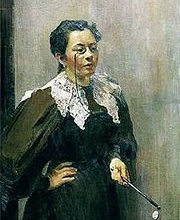
Anna Petrovna Ostroumova-Lebedeva – Russian artist, graphic artist, watercolor painter, master of landscape, was born May 17, 1871 in St. Petersburg in the family of a high-ranking official. She started painting as a schoolgirl, and in 1889-1892 she studied graphic arts in the class of Vasily Vasilyevich Mate in the School of Technical Drawing of Baron Alexander Ludwigovich Stieglitz. In 1892-1900 she continued her studies at the St. Petersburg Academy of Arts, her teachers were Ilya Repin, Konstantin Savitsky and Pavel Chistyakov.
Studying in 1898-1899 in Paris, the artist gets to know Somov, Benois and in 1900 makes his debut with his engravings at the exhibition “World of Art”.
Despite the fact that Ostroumova-Lebedeva tried her hand at many genres – portraits and still lifes of her brush are known, but more often her engravings and watercolors were dedicated to St. Petersburg. Its urban landscapes are full of simplicity and grandeur, laconicism and grace.
After the revolution Ostroumov-Lebedeva taught at the Higher Institute of Photography and Photography, in 1934-1935 – at the Academy of Arts. During the Great Patriotic War she stayed in Leningrad, created a number of shrill graphic images of the besieged city. After the war in 1946, Ostroumova-Lebedeva was awarded the title of People’s Artist of the RSFSR. Anna Petrovna Ostroumova-Lebedeva initiated the revival of Russian original chromolithography and color woodcuts.
Ostroumova-Lebedeva died in 1955 in Leningrad.
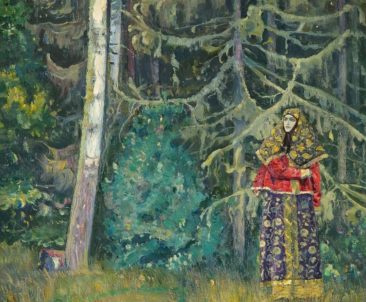
Mikhail Nesterov was born in Ufa on May 31, 1862, in a merchant family, and his father expected to see the successor of his business in his son. However, in Michael, the craving for art was awakened early, it was not easy to reconcile with this family, but nevertheless in 1876 Mikhail Nesterov entered the Moscow School of Painting, Sculpture and Architecture. His teachers were such eminent artists as Savrasov, Pryanishnikov, Perov.
In the summer of 1883, Nesterov met with Maria Martynovskaya. We can say that this meeting was a turning point in the fate of the artist. As he wrote in his memoirs: “My love for Masha and her loss made me an artist, put my feelings, emotions and soul into my work, in a word, everything that was lacking before, and everything that people valued and valued in my pictures “. The image of his beloved wife can be traced in most of the female images of Nesterov. The heroines of his paintings are full of beauty and humility, suffering and spiritual light.
In the Voronezh Art Museum. I. N. Kramskoy is a picture of Mikhail Nesterov’s “Fairy Tale”. Master with great love transmits the harmony of man and nature, the originality of the soul of a Russian woman, her beauty and sorrow.
After the October Revolution, Nesterov mostly portraits, in the 1930s he creates a series of portraits of his remarkable contemporaries – the sculptor Vera Mukhina, the scientist Ivan Pavlov, the artist Elizaveta Kruglikova and many others.
In recent years, Nesterov is working on a book of memories, which was published several months before his death. He died on October 18, 1942, and on his gravestone only four words were broken: “Artist Mikhail Vasilyevich Nesterov.”
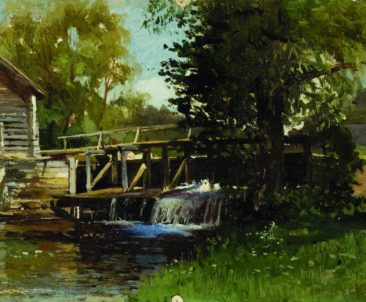
Vladimir Egorovich Makovsky is a Russian artist, a bright representative and one of the leaders of the Association of Traveling Exhibitions. The brother of the artists of Constantine and Nikolai Makovsky.
He was born in a creative family. Mother had a beautiful voice, she taught at the Moscow Conservatory. His father is an artist, collector, musician, one of the founders of the Moscow School of Painting, Sculpture and Architecture, in which Vladimir Egorovich began his teaching of artistry. For his studies and after studying, he received many awards, medals and awards.
Vladimir Makovsky is a recognized master of the “small genre”. Maximum his talent manifested in the depiction of genre scenes, he was called an artist-novelist. Looking at each of his paintings, the viewer sees a whole story, including not only the pictured moment, but the preceding and subsequent events. His small stories, small paintings on household themes are remarkable for their warmth and humanity.
Beginning in the mid-seventies and especially in the eighties of the 19th century, V. Makovsky began to pay more attention to work in the air. And although the landscape itself does not occupy a large place in Makovsky’s work, work on the air played a big role in the development of his pictorial mastery. His genre compositions in the landscape under sunlight have a special artistic value.
By the end of the 1870s, in a relatively short time, V. Makovsky from the beginning artist became a recognized master.
In 1882, V. Makovsky accepts the invitation to take the place of a senior teacher at the Moscow School of Painting, Sculpture and Architecture, replacing the deceased V.G. Perov. Twelve years, during which he taught at the Moscow School, were the period of the artist’s highest success, creative audacity, courage of thought, maturity of mastery.
Vladimir Egorovich Makovsky died on February 21, 1920, leaving behind about one and a half thousand paintings, many of which are currently represented in the most famous museums.
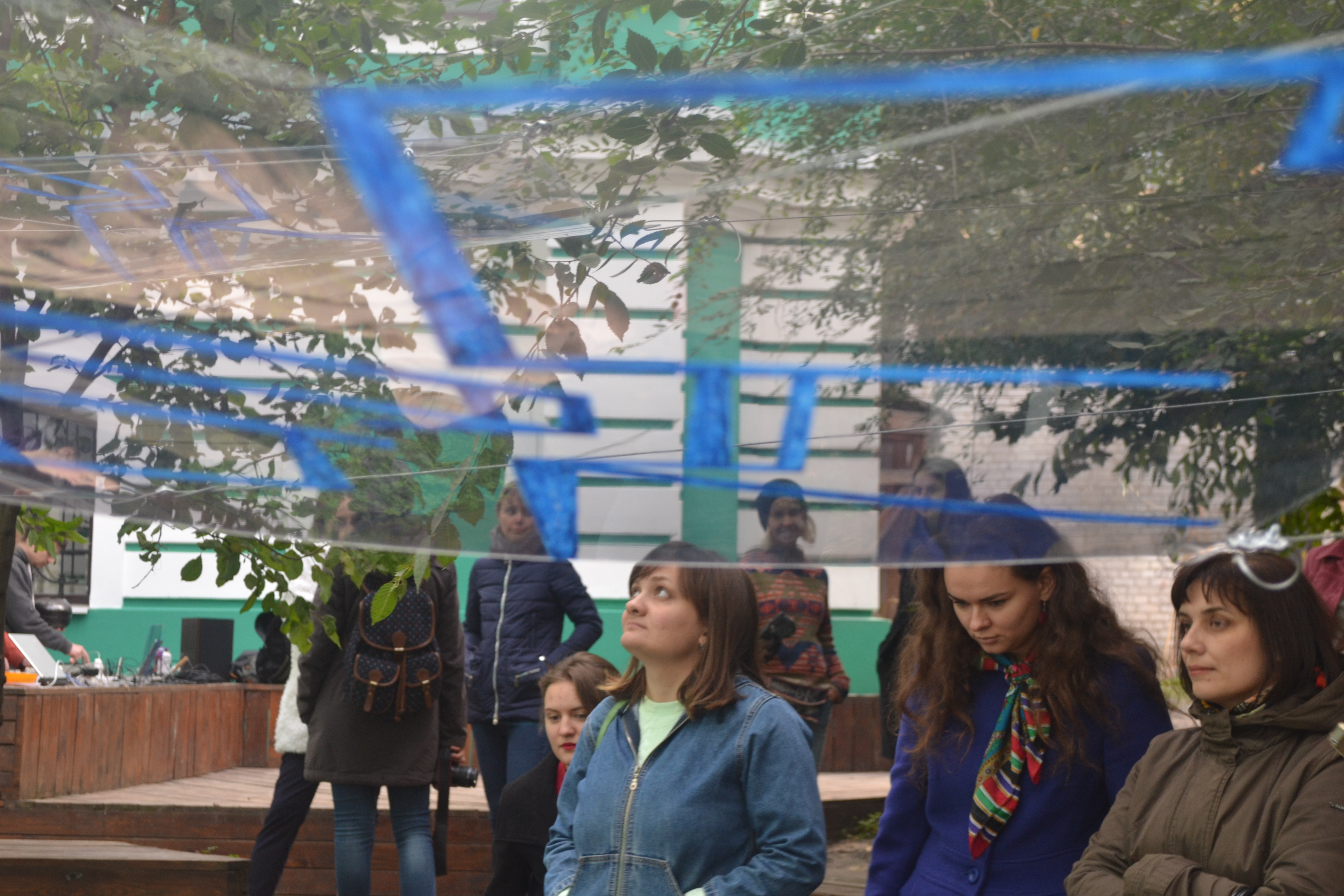
September 28 at 17.00 in the courtyard of the museum was the opening of the installation of the artist Yegor Astapchenko “Height”.
Cool weather did not stop those present laying down on the catwalks (the author’s idea) in order to look at the majestic architecture of the Voronezh Palace and the sky above it through the elements of the installation made by the artist.
The opening was accompanied by sound design, which provided musicians: Max Zhrivodkin, Ivan Skobelev, Sergei Khutornoy.
The museum patio will be open for a visit on September 29 from 16.00 to 18.00 and on September 30 from 16.00 to 17.00.
Free admission.
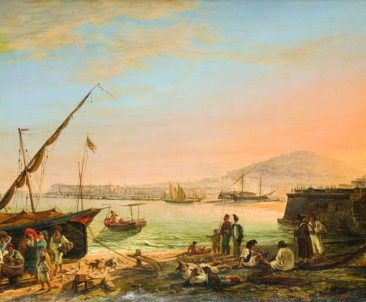
Sylvester Shchedrin was born on February 13, 1791 in the family of the famous Petersburg sculptor, rector of the Academy of Arts Feodosiy Fedorovich Shchedrin. The future artist grew up surrounded by people close to art and early discovered the ability to draw. He observed the work of his father and uncle, Semyon Fedorovich, the famous landscape painter, at the age of 9, Sylvester goes to study at the Academy of Arts, where he will study for 11 years. Having graduated from the Academy with the Big Gold Medal for the painting “View from the Petrovsky Island in St. Petersburg”, Shchedrin was given the opportunity to leave for further studies abroad, but the trip had to be postponed because of the difficult military-political situation in Europe.
Arriving in Italy in 1818, Sylvester Shchedrin works a lot and fruitfully, writes monuments of antiquity, first strictly adhering to the traditions of academicism. However, the artist increasingly gravitates toward simplicity and naturalness, his paintings “New Rome. Castle of Saint Angel “,” Lake Albano “made a great impression on contemporaries.
When the term of stay as a pensioner expired, Sylvester Shchedrin decides not to return to Russia and leaves for Naples, which was fascinated and wrote him a lot. “View of Naples. Santa Lucia “,” View of Sorrento near Naples “,” Fishermen at the shore “,” The Great Harbor in Sorrento “,” The Little Harbor in Sorrento “- landscapes painted by the artist in the late 1820s, are kept in the Tretyakov Gallery and in Russian museum.
Despite the severe liver disease, Sylvester Shchedrin performed many orders, but the artist’s efforts melted. He died in Sorrento on October 27, 1830, at the age of 39.
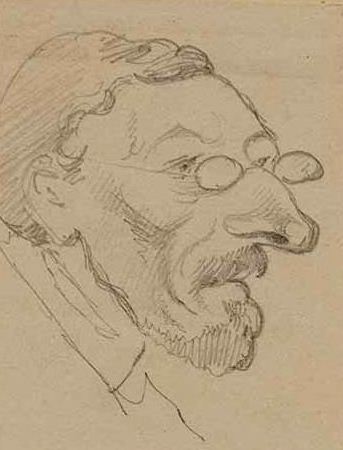
The largest and most famous stained glass in Russia – the image of the risen Savior in St. Isaac’s Cathedral of St. Petersburg – was created in 1843 by a sketch of the German artist Henry Maria von Hess. The production of the stained-glass window of 28.5 square meters was supervised by one of the most significant technologists and masters of glass painting in the history of the German stained-glass art of modern times Max Emmanuel Einmiller.
Max Einmiller was born on February 14, 1807 in Munich and was an inspector of the institute for the renewal of medieval painting on glass. He achieved extraordinary success in the technique of manufacturing colored glass, creating more than a hundred colors and shades. His works are decorated with cathedrals not only in Germany, they can be seen in Russia, the Vatican and even the United States. Ludwig I ordered Einmiller stained glass windows for Cologne Cathedral, Regensburg and Augsburg cathedrals also boast windows decorated with Einmiller. For the Vatican, the artist created two majestic stained-glass windows with figures of Peter and Paul. However, the best and most famous work of Einmiller is 40 windows for the Cathedral in Glasgow, which depicts more than a hundred subjects from the Bible, performed together with the son of the artist Henry.
The artist died on December 8, 1870 in his native Munich and was buried in the Old Southern Cemetery of the city.
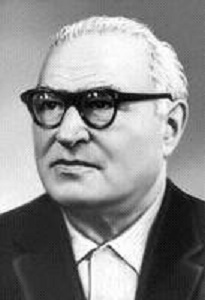
February 21, 1906 was born an outstanding Soviet illustrator, graphic artist, teacher Eugene Adolfovich Kibrik. Hertz Kibrik, namely, this name he received at birth, was born into a well-to-do Jewish family in Voznesensk. His father was a large grain seller and shipowner. Since childhood, Eugene Kibrik was fond of drawing and reading, visited a circle of fine arts, and in 1922 he entered the Art Institute in Odessa.
In 1925, Kibrik moved to Leningrad and entered VHUTEIN. In training at this time, a streaming method of teaching was adopted, which was connected with the distrust of the authorities to the old professor. Teachers changed every other day, bringing confusion to the heads of students. Two years later, Kibrik moved to the studio of Pavel Filonov – one of the leaders of the Russian avant-garde. Under the great influence of the master in 1930, Kibrik made illustrations to “Lieutenant Kizhe” Yuri Tynyanov. In the 1930s, the artist fully devotes himself to illustrations – “Nevskaya novia” by DM Lavrukhin, 1933; “Heavy Division” A. G. Lebedenko, 1934, etc. Kibrik is already developing his own energetic and rigid manner of drawing, grasping the visible features of the surrounding world. But the determining factor was his work on R. Rolland’s book “Cola Bryunion” (1934-36). Kibrik attracts full-blooded, epically intact characters, he gives his characters an open, theatrical gesture, active facial expressions, often using professional actors as role models. He loves a large format, giving scope to the natural freedom of movement.
The rough, coarse-grained stroke of his lithographs densely and juicyly falls on the page of the book. So builds Kibrik and his next book – “The Legend of Ulenspiegel …” by S. de Coster (1937-38). The Great Patriotic War reinforced the artist’s desire for heroic themes and attracted his attention to the Russian classics: N. Gogol’s Taras Bulba (1944-45).
Monumental drama and heroics of their best books of 1930-40’s. the artist remained faithful in later works: “How the Steel Was Tempered” by NA Ostrovsky (1953-56), “Boris Godunov” by Alexander Pushkin (1959-64), “Portrait” by NV Gogol (1973- 77).
Yevgeni Kibrik started his pedagogical activity in 1953, becoming the head of the easel graphics studio of the MGAHI named after M.Sh. VI Surikov. His unique method of teaching, the desire to find an individual approach to each student, to reveal new facets of talent in everyone inspired respect and respect not only for students but also for colleagues. In 1962, Kibrik became the head of the department of graphics. For 25 years from 1953 to 1978 the artist was a professor at the Moscow State Academy of Architecture. Surikov. Yevgeny Kibrik died on July 18, 1978, was buried in Moscow at the Novodevichy Cemetery.